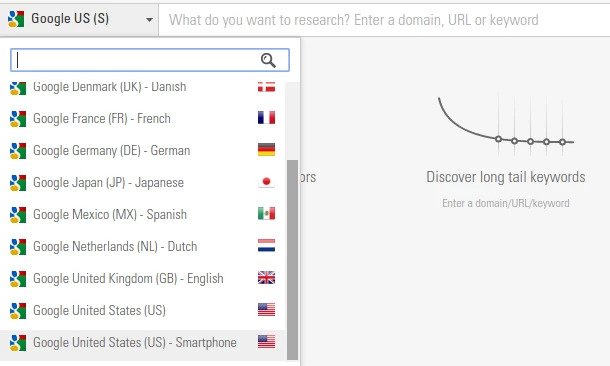Mobile usage is huge. Google announced in 2015 that more than half of the searches performed are now on mobile devices. Mobile also represents 65 percent of all digital media time. Customers are not just using mobile phones to look up addresses, either. In 2015, m-commerce grew an estimated 3 times faster than the rest of e-commerce. Consumers are becoming increasingly comfortable with the idea of using mobile devices for their online shopping. By 2018, mobile shoppers are expected to spend $600 billion, which is four times the amount spent from mobile devices in 2014. As mobile becomes an increasingly critical part of the online experience, brands cannot afford to miss out.  Yet, despite the impressive growth seen in the adaptation of mobile by users, there seems to be a massive disconnect between mobile users and mobile marketing. A recent survey found the following:
Yet, despite the impressive growth seen in the adaptation of mobile by users, there seems to be a massive disconnect between mobile users and mobile marketing. A recent survey found the following:
- Fifty-six percent of companies describe their mobile advertising as, “at best, a bolt-on to desktop-focused activities”
- Only 3 percent say that they are getting ‘excellent’ ROI from overall mobile advertising
- Twenty-five percent say that they do not plan their mobile advertising based upon the average mobile behavior of their consumers
- Only 22 percent of brands say they are at least ‘somewhat’ using hyperlocal advertising to its fullest potential
Despite the growth in mobile and the increasing importance of m-commerce, the majority of brands are still failing to effectively market to this key audience.
Why does this disparity exist in mobile marketing?
It is easy to point out the disparity between where modern customers seek out brands and where those companies invest their ad budgets. To begin to solve the problem, we need to uncover the reasons why this is happening. In the survey cited above, many companies indicated that they simply did not believe that customers were converting on mobile. They did not see mobile as a primary means of interacting with customers as they neared conversion. The recent growth in m-commerce, however, seems to disprove this theory. When brands were asked about the biggest challenges that made it difficult for them to take a strong stance in the mobile marketing arena, many brands also mentioned problems with data sources, attribution and integrating the different channels. It is important for organizations to recognize that the tremendous gap between the devices that customers are using to go online and where brands are targeting prospects means that there is now an enormous opportunity in mobile marketing for the brands that are willing to seize it.
How to drive your mobile marketing forward
Understand what your prospects are doing on mobile
Before you can move forward with a mobile campaign, you need to have a firm understanding of how mobile customers behave on your website and what your prospects seek online. Investigating keywords specifically for mobile search can offer you insight into what on-the-go prospects want to see when looking for information about your industry. You will be able to identify differences between how customers on mobile devices conduct searches compared to desktop and the types of content that are most appealing to them when they land on the site. Remember the importance of the micro-moment on mobile. According to Google these are:
Intent-driven moments of decision-making and preference-shaping that occur throughout the entire consumer journey
The search engine leader has broken these actions down into four main categories:
- The I-want-to-know moment
- The I-want-to-go moment
- The I-want-to-buy moment
- The I-want-to-do moment
Consider which categories apply most to your brand and the content you will be producing. Research keywords that would tie in nicely with these particular categories. If you are a BrightEdge user, then uncovering this valuable information can be straightforward.
- Visit the Data Cube to perform keyword research. To the left of the search bar you can change the search engine you want to use - select Google United States - Smartphone. This will provide you with the data applicable to mobile searches. Identify keywords for topics that are the most popular for mobile users.
 Under Page Reporting and Keyword Reporting you can again adjust the search engine to be Google United States - Smartphone. This will offer you insight into how your keywords and your individual pages are performing with mobile users. Look for patterns, such as formats or topics, that seem to guide the success or failure of your pages on mobile.
Under Page Reporting and Keyword Reporting you can again adjust the search engine to be Google United States - Smartphone. This will offer you insight into how your keywords and your individual pages are performing with mobile users. Look for patterns, such as formats or topics, that seem to guide the success or failure of your pages on mobile.- Use the StoryBuilder to create dashboards dedicated towards your mobile efforts. You can create charts that will isolate which pages are driving the most mobile traffic as well as mobile versus desktop performance.
In August 2016, we will also be introducing new capabilities that will allow you to monitor which content is ready for AMP, where Top Stories and AMP content are appearing, and how AMP, mobile, and the micro-moment are impacting your brand and revenue.
Capitalize on local optimization
Customers on mobile are often looking for local information, so a strong local presence can positively impact shopping behavior. One study found that as many as 88 percent of smartphone users will make local searches from mobile. They also found that a local search on mobile was twice as likely to result in a purchase than a local search on desktop and that 78 percent of local-mobile searches resulted in a purchase. To meet the needs of these customers, your website needs to be fully optimized for local. This includes:
- Claiming your business on Google
- Developing high-quality content to improve engagement metrics
- Attracting backlinks with a strong distribution strategy and efforts to write guest posts
- Include your business in online listings and ensure the consistency with the information you include - particularly your Name, Address, and phone number
- Work to attract positive reviews by making it easy for satisfied customers - consider including a link in follow-up emails after a purchase or otherwise letting them know their opinion is valued.
Create mobile marketing campaigns
Your mobile marketing campaign should be designed to target your mobile prospects based specifically on the behavior they exhibit while on their mobile devices. You will need to use your keyword and behavior research to appropriately target your ideas. Remember that with mobile, local search and the micro-moment will be significant, so include these ideas in your keywords. Create mobile campaigns that focus on actions applicable to the mobile user, creating buttons that are large enough to read and easy to click on a small screen. Banners, for example, tend to be frustrating and hard to read on mobile. Customize your CTA to the experience that your prospects are having on the mobile site. Mobile marketing is an increasingly important part of any successful mobile marketing campaign, and thus is a critical part of the future of any successful promotional campaign. Customers are increasingly turning to their mobile devices to provide them with immediate results, and brands need to be there to serve them.


